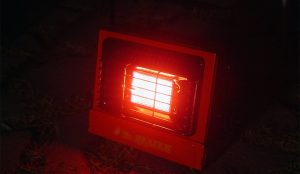
Peshawar: For the elderly, winters can be a hard time of the year. For Habibullah, 70, winter this year is even harder, not because of the often biting cold when frequent gas outages makes it difficult for people to cook and heating in houses is a luxury few can afford. But because he has ended up in hospital trying to escape the cold.
For the past few days, Habibullah has been admitted to the Khyber Teaching Hospital (KTH) in Peshawar, where he lies in the burns ward with a bandaged leg, his son Naseerullah sitting by the bed. Habibullah was brought to the hospital with severe burns on his leg.
“My father’s eyesight is very weak,” Naseerullah told News Lens Pakistan. “He was alone in the room sitting close to a gas heater when his pants caught fire. By the time we got to him and doused the flames, he had received extensive burns on his leg.”
Come winters and every year, hundreds of patients are admitted to the KTH with burns, often so severe they cause deaths. Farhad, a public relations officer at KTH, said that the numbers of burn patients went up in, and each year, the incidence of burns was higher than the year before.
“In 2014, KTH received 1328 patients while in 2015 their number was 1791, which means 14 percent more patients than the year before,” said Farhad. “The number of patients admitted to the burns unit of KTH in 2014 was 393 whereas in 2015 the number was 454, registering 7 percent increase over the year before.”
Health workers attribute increase in the number of burn victims during winters to “reckless use of gas heaters to keep rooms warm in winters.” If not used carefully, they say, gas heaters often cause burns and deaths due to gas poisoning.
“Gas heaters release carbon monoxide which is extremely harmful to the human respiratory system and even causes death when inhaled in large amounts for a long time,” ,” said Abdul Haseeb, a doctor at the burns unit at KTH. “That is why it (carbon monoxide) is called a silent killer.”
He said since houses were often not properly ventilated, gas heaters consumed the oxygen available in the rooms, causing a shortage that in the long run could lead to respiratory complications, or even death in acute cases.
Doctors also say that sitting close to a gas heater not only causes accidental exposure to burns when clothes catch fire but also skin disease.
Haseeb said winter was when the hospital received the highest number of burn patients, mainly due to the use of gas heaters for heating. “But it doesn’t mean that gas heaters are the only cause of burn injuries; there are other reasons as well. Often, patients are women who receive burns when gas cylinders explode or their clothes catch fire while cooking in kitchen. Such incidents can be greatly reduced by being careful and taking precautionary measures.”
Haseeb said burn incidents could be checked by bringing awareness to the masses. “It is important to keep rooms ventilated to ensure inflow of oxygen while using gas heaters. The use of heaters in rooms should be minimal. Gas connection from the main point should be turned off before going to sleep at night.”
Women or whoever cooks in the kitchen should make sure that there is no leakage of gas from stoves and cylinders, said Dr Haseeb. “In case of leakage, it should be immediately fixed.”
Every person, he said, in every house should have knowledge of first aid to treat burn victims.
A doctor in the burns unit told News Lens Pakistan that there was no full-fledged burns hospital in the entire Khyber Pakhtunkhwa “due to negligence of successive governments.”
“The burns centre near Hayatabad Medical Complex is under construction since 2003 but nowhere near completion due to negligence of the previous and incumbent provincial governments,” said the doctor, asking not to be named because he was not authorized to speak to media.
If completed, the 120 bed hospital would be the largest in the country, he said



